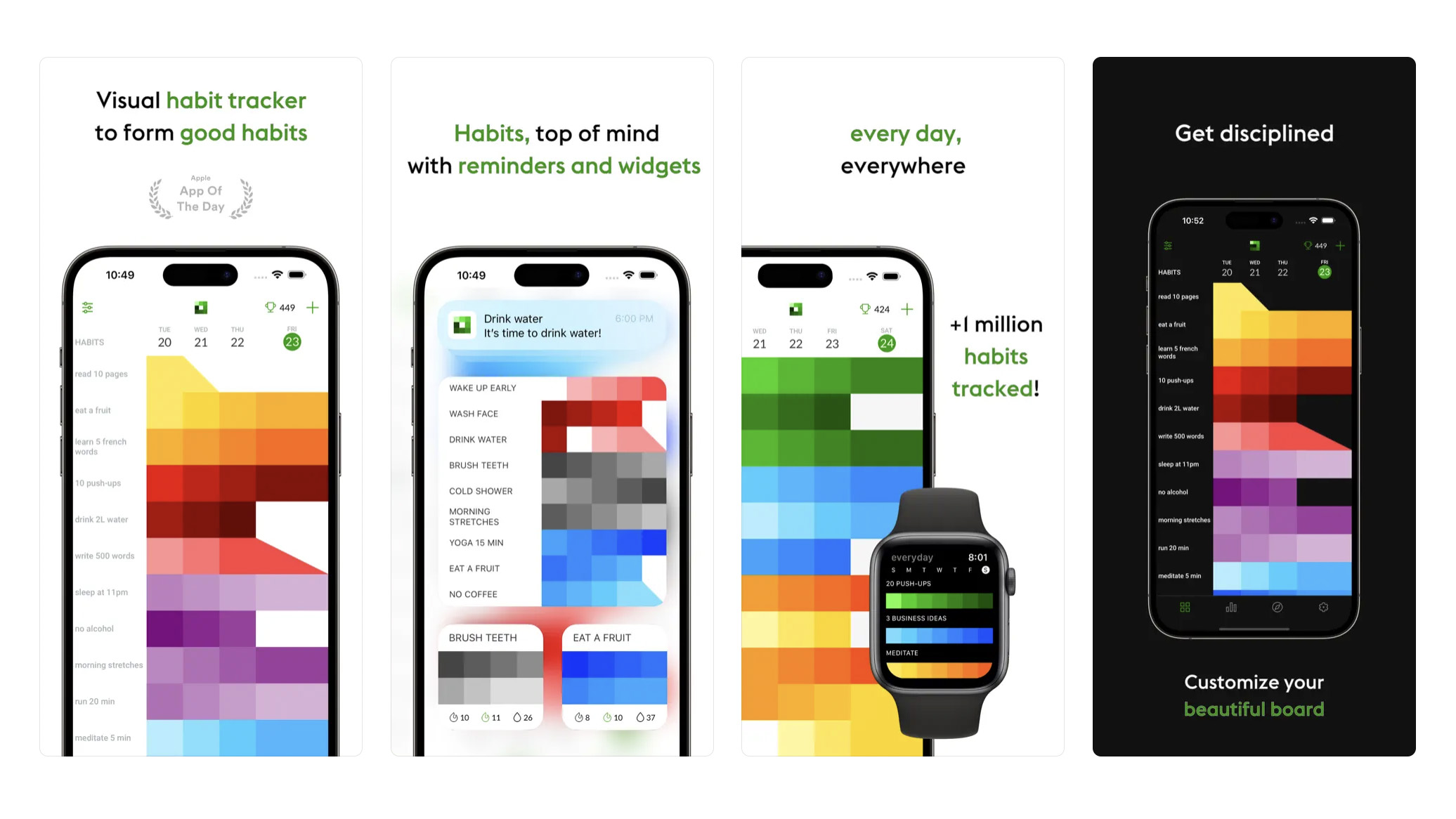This iPhone app makes habit-tracking easier and more beautiful
Everyday is a judgement-free habit tracker that rewards you for streaks.


Mac / iPhone / iPad / Apple Watch – Free (In-App Purchases)
Want more apps? Check out our hand-picked lists:
- Best iPhone apps
- Best iPad apps
- Best macOS apps
- Best Apple Watch apps
In the quest to build better habits into our days, many of us turn to habit tracking, whether that’s in a notebook, the Notes app in our phones or with a dedicated habit tracking app.
The idea behind this practice is simple and powerful. By consistently monitoring our progress, we're not only reminded of our goals but we’re also motivated by how many times we’ve shown up, gone to the gym, flossed, hit 10k steps, whatever it is, each day. There are plenty of habit tracking apps that can help, but Everyday is my new favorite because it’s got a unique (and great-looking) approach with a user-friendly design.
One of the standout features of Everyday is its initial setup process, which encourages you to break down your big goals into specific, achievable daily tasks. So, instead of setting a vague objective like "get fit," the app guides you to commit to concrete actions you can complete each day, such as "do 10 push-ups daily."
Similarly, rather than aspiring to "learn conversational French," it suggests focusing on "learning 5 new French words" each day. This method of goal-setting not only makes your objectives seem more attainable but it integrates them into your daily routine and means you see progress each day rather than waiting months.
How does Everyday make habit tracking fun?
To get started, you can give each habit a title, description, and assign it a color. Although you’re encouraged to complete each habit everyday (hence the name), the app also allows for scheduling habits at specific times and on specific days, too.
The principle of maintaining a streak is central to Everyday's design. It operates on the belief that the longer you maintain a habit, the less likely you are to abandon it. This concept of "not breaking the chain" has proven to be a strong motivator for many people and it’s added to loads of your favorite apps – the most obvious (and not to mention the most persistent) is Duolingo.
What sets Everyday apart from other habit-tracking apps is how great it looks. The app presents your habits listed on one side and days completed along the top. Completing a habit fills in a square with a color, creating a beautiful gradient as you continue your streak. This approach not only makes tracking habits satisfying but also serves as a vivid representation of your progress towards your goals, which I love seeing when I'm not feeling motivated.
iMore offers spot-on advice and guidance from our team of experts, with decades of Apple device experience to lean on. Learn more with iMore!
Beyond the nice colors, Everyday also offers valuable insights into your habit patterns. The ability to view stats, like current streaks, longest streaks, and total habit counts helps users understand their behavior over time. Recognizing trends, like challenges in maintaining habits during busy work periods or weekends, can also be important so you can make adjustments.
If you want a habit-tracking solution that combines functionality with aesthetic appeal, Everyday is currently my top recommendation. It works with the Mac and iPad, but I get the most use out of it from my iPhone and Apple Watch because I can quickly chart my progress on the move.
It makes sense to break down goals into daily actions and the added color chart design really makes it stand out against its rivals. Sure not everyone needs a simple interface and nice colors to see their habits through, but for me it’s been a game-changing way to kick off the new month.
iMore's daily App of the Day post helps you find great apps you've never heard of on your iPhone, iPad, Mac, and Apple Watch, curated each day by our expert team!

Becca Caddy is a contributor to iMore, as well as a freelance journalist and author. She’s been writing about consumer tech and popular science for more than a decade, covering all kinds of topics, including why robots have eyes and whether we’ll experience the overview effect one day. She’s particularly interested in VR/AR, wearables, digital health, space tech and chatting to experts and academics about the future. She’s contributed to TechRadar, T3, Wired, New Scientist, The Guardian, Inverse and many more. Her first book, Screen Time, came out in January 2021 with Bonnier Books. She loves science-fiction, brutalist architecture, and spending too much time floating through space in virtual reality. Last time she checked, she still holds a Guinness World Record alongside iMore Editor in Chief Gerald Lynch for playing the largest game of Tetris ever made, too.

